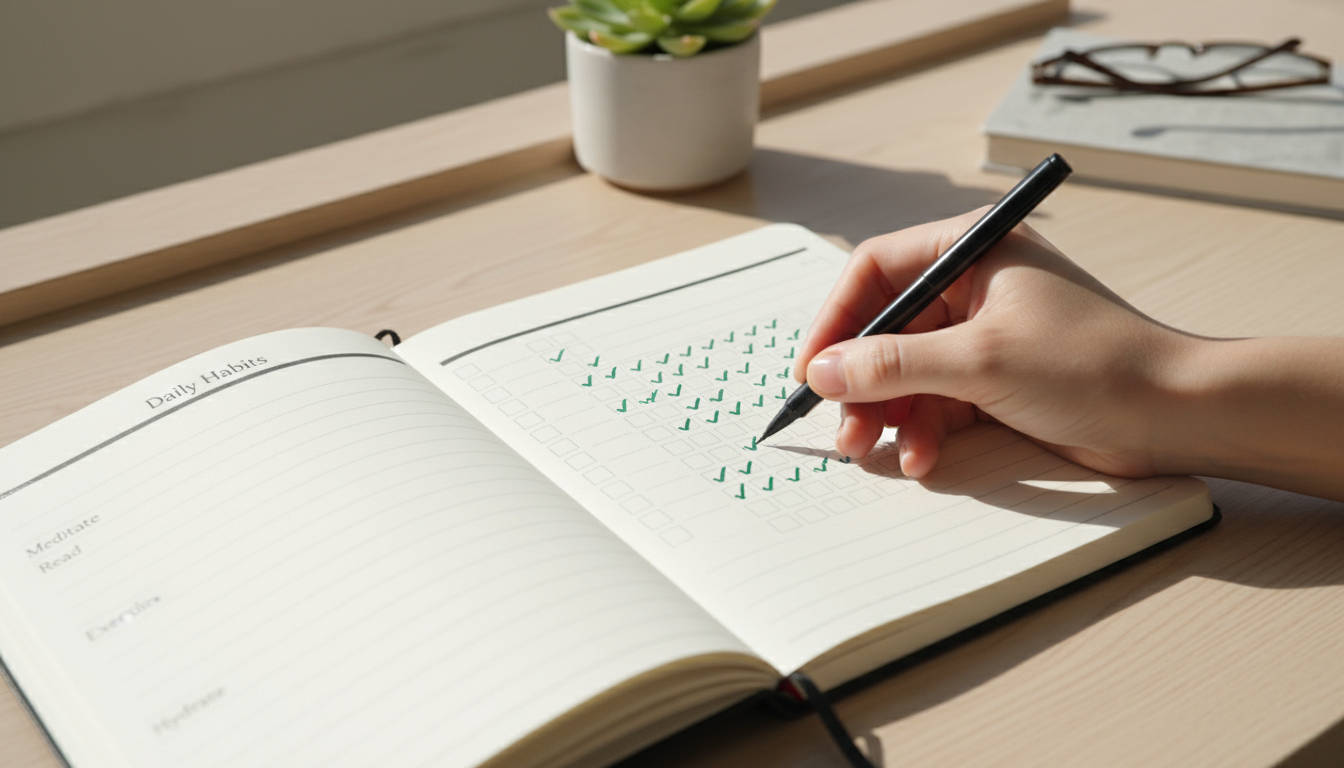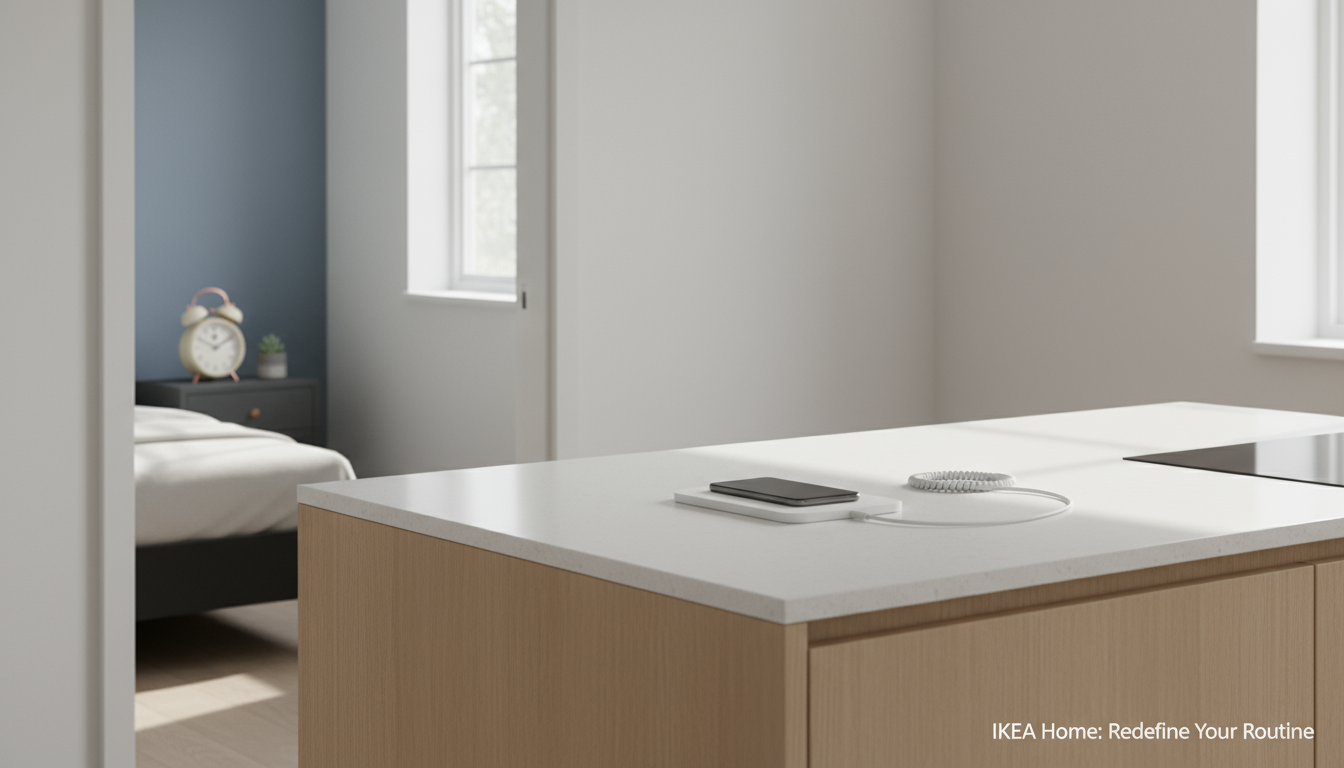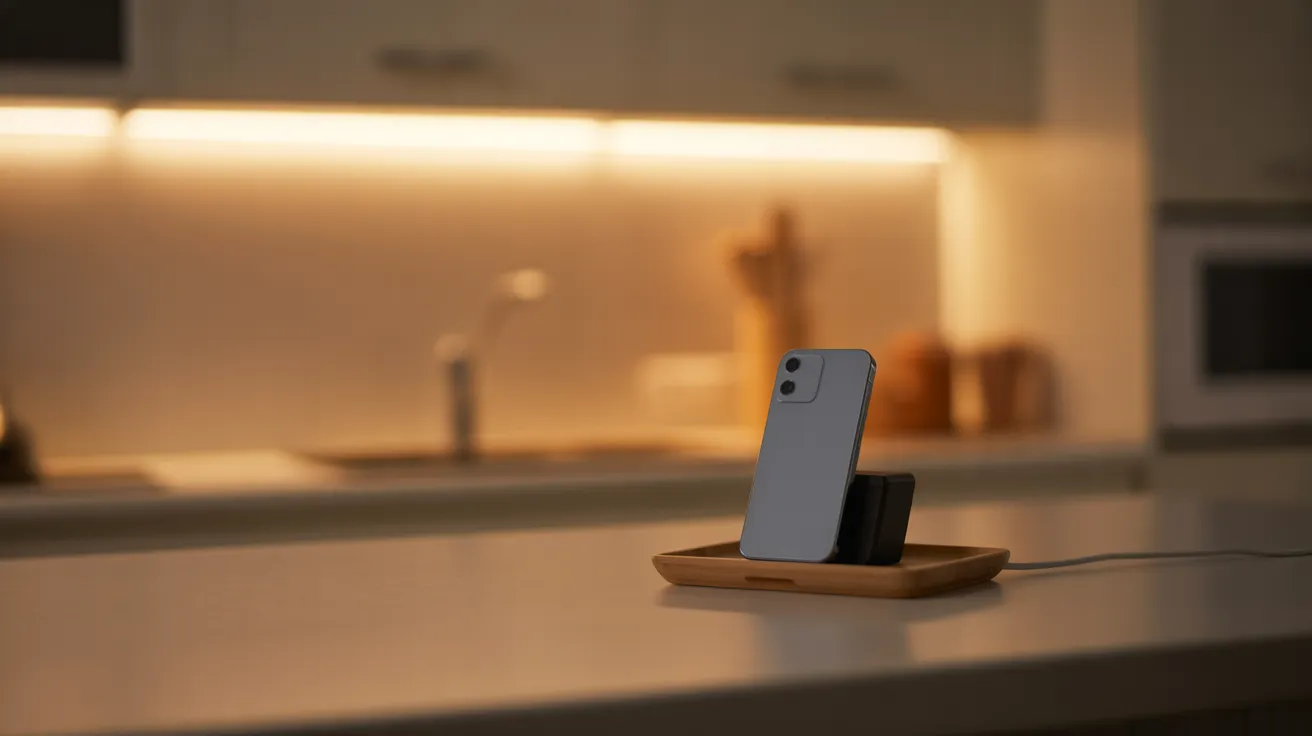
If you’ve ever tried to force a bad habit out of your life through sheer willpower, you already know the story. It works for a day, maybe a week. You feel a surge of control and motivation. But then, a stressful day at work, a moment of boredom, or a subtle trigger in your environment sends you right back to where you started. You end the day feeling defeated, wondering why you can’t just make the change stick.
Here’s a truth we often overlook, especially those of us living in busy, stimulus-rich urban environments: willpower is not a muscle to be flexed, but a finite resource that depletes. Our cities are designed with thousands of cues that trigger our impulses—the glowing screens, the endless delivery options, the constant noise demanding our attention. Relying on willpower alone to navigate this landscape is like trying to hold back the tide with a bucket. It’s exhausting, and ultimately, ineffective.
So, how do we create lasting change? How do we finally unlearn the bad habits that hold us back from being the person we want to be? The answer isn’t found in grand, sweeping gestures or a sudden burst of motivation. It’s found in the quiet, consistent application of science. It’s about understanding the mechanics of your habits and then systematically redesigning your behavior, one tiny step at a time.
This is the core of habit reversal. It’s not about fighting your brain; it’s about working with it. This guide will walk you through the science-backed principles of habit reversal training, a gentle yet powerful approach to dismantling unwanted behaviors. We won’t promise a quick fix. Instead, we promise a realistic, sustainable path toward reclaiming your focus, energy, and intention. Forget the shame and frustration. It’s time to learn how to unlearn.
📚 Table of Contents
- The Architecture of Your Habits: Cue, Action, Reward
- Designing Your Change: A Practical Guide to Habit Reversal Training
- Step 1: Choose Your Minimum Viable Action
- Step 2: Conduct a Friction Audit
- Step 3: Engineer Your Environment and Cues
- Step 4: Build in Accountability
- Navigating Setbacks: Safeguards for a Realistic Journey
- Planning for Relapse: The “If-Then” Strategy
- The Psychology of Streaks (and Why Not to Break the Chain)
- Resetting Without Shame: The Two-Day Rule
- Putting It All Together: Worked Examples
- Frequently Asked Questions About Habit Reversal
- How long does it really take to unlearn a bad habit?
- What should I do when my routine is disrupted by travel or sickness?
- I feel like I’ve hit a plateau. What can I do?
- Is it better to try to unlearn multiple bad habits at once?
- Is it enough to just stop a bad habit, or do I have to replace it?
- Your First Steps to Lasting Change

The Architecture of Your Habits: Cue, Action, Reward
Before we can dismantle a habit, we need to understand how it was built. Every habit, good or bad, operates on a simple neurological pattern that researchers call the “habit loop.” Thinking about how to unlearn bad habits begins with seeing this loop clearly. It consists of three fundamental parts, and recognizing them in your own life is the first, most crucial step toward change.
1. The Cue: This is the trigger, the spark that sets the entire habit in motion. A cue can be almost anything. It might be a specific time of day (like the 3:00 PM energy slump), a particular place (your kitchen counter), an emotional state (feeling bored or stressed), a preceding action (finishing dinner), or the presence of certain people. For many of us, the most powerful cue is the buzz or notification from our smartphone. It’s an external signal that your brain has learned to associate with an impending reward.
2. The Action (or Routine): This is the habit itself—the behavior you perform. It’s the mindless scrolling, the trip to the pantry for a sugary snack, the nail-biting, or the procrastination. The action is the most visible part of the loop, but it’s important to remember that it’s just the middle step. It’s not the root cause; it’s the response to the cue and the pursuit of the reward.
3. The Reward: This is the prize your brain gets for completing the action, and it’s the reason the loop becomes ingrained. The reward satisfies the craving that the cue initiated. For scrolling social media, the reward might be a hit of dopamine from a novel piece of information or social connection. For a snack, it’s the taste and sugar rush. For biting your nails, it might be a momentary relief from anxiety. This reward teaches your brain: “Hey, when you see that cue and perform that action, you get this good feeling. Remember this for next time.” Over time, this loop becomes so automatic that you perform it without conscious thought.
This automation is the brain’s way of being efficient. It frees up mental energy for more complex tasks. The problem is, the brain doesn’t distinguish between “good” and “bad” habits. It only knows what is efficient and rewarding. This is why simply trying to “stop” a bad habit is so difficult. You are trying to remove a deeply carved neurological pathway without offering your brain an alternative route to a reward it craves.

Beyond the Loop: The Power of Identity-Based Habits
Understanding the habit loop is the technical side of the equation. But to make change durable, we need to connect it to something deeper: our sense of self. This is where the concept of identity-based habits comes in. It’s a shift in focus from what you want to achieve to who you want to become.
Outcome-based goals sound like this: “I want to stop eating junk food.” Or, “I want to stop wasting time on my phone at night.” These are fine starting points, but they don’t anchor the change to your identity. When you face a moment of weakness, it’s easy to make an exception because the action isn’t tied to your core self.
Identity-based goals reframe the entire process. Instead of “I want to stop eating junk food,” the identity is, “I am a healthy person who nourishes my body.” Instead of “I want to stop wasting time on my phone,” it becomes, “I am a focused person who values rest and deep work.”
Every time you perform a small action that aligns with your desired identity, you cast a vote for that version of yourself. Choosing a piece of fruit over a cookie is a vote for “I am a healthy person.” Putting your phone away an hour before bed is a vote for “I am a restful, focused person.” The goal is not to be perfect, but to start casting more votes for your desired identity than your old one. This reframing is a cornerstone of effective habit reversal, because it transforms the process from a chore into an act of self-definition.

Designing Your Change: A Practical Guide to Habit Reversal Training
With a clear understanding of the habit loop and the power of identity, we can move from theory to practice. Habit reversal training is not a single technique but a collection of strategies designed to systematically deconstruct an old habit and build a new one in its place. It’s a process of conscious design, where you become the architect of your own behavior. Let’s explore the key components.

Step 1: Choose Your Minimum Viable Action
One of the biggest mistakes we make when trying to break habits is aiming too high, too soon. We declare we’ll go to the gym for an hour every day or meditate for 30 minutes. When we inevitably fail to meet this high bar on a busy day, we feel discouraged and give up entirely. The solution is the minimum viable action (MVA).
An MVA is the smallest, most laughably easy version of your desired new habit. It’s an action so simple that you can’t say no to it, even on your lowest-energy, least-motivated day.
- Instead of “read a chapter every night,” your MVA is “read one sentence.”
- Instead of “meditate for 20 minutes,” your MVA is “take one deep breath.”
- Instead of “journal three pages,” your MVA is “write down one word about your day.”
The point of the MVA is not to achieve a massive result in one day. The point is to show up. It reinforces your new identity and keeps the momentum going. Anyone can read one sentence. Anyone can take one breath. By starting with the MVA, you make the act of starting frictionless. Once you’ve started, it’s often easier to continue. And even if you don’t, you’ve still cast a vote for your new identity. You have succeeded for the day.

Step 2: Conduct a Friction Audit
Habits are often behaviors of convenience. We do what is easy. Friction is anything that makes an action more difficult to perform. We can use this concept to our advantage by strategically adding friction to our bad habits and removing it from our good ones.
To start your friction audit, take the bad habits you want to unlearn. For each one, ask: “How can I make this 20 seconds harder to do?”
- Bad Habit: Mindlessly scrolling on your phone. Add friction: Move the social media apps off your home screen into a folder on the last page. Log out of your accounts after each use, forcing you to re-enter your password. Keep your phone in another room.
- Bad Habit: Eating cookies from the pantry. Add friction: Move the cookies to a high shelf, out of sight. Put them in an opaque, sealed container. Don’t buy them in the first place.
Next, do the opposite for the new habits you want to build. Ask: “How can I make this 20 seconds easier to do?”
- Good Habit: Reading before bed. Remove friction: Place the book you want to read on your pillow each morning.
- Good Habit: Going for a morning walk. Remove friction: Lay out your workout clothes and shoes the night before.
- Good Habit: Drinking more water. Remove friction: Fill a large water bottle and place it on your desk at the start of the day.
This small shift in effort can dramatically alter your default behaviors over time. You are making your desired path the path of least resistance.

Step 3: Engineer Your Environment and Cues
Your environment is one of the most powerful, and often invisible, drivers of your behavior. The cues that trigger your habit loops are embedded in your surroundings. To truly succeed at habit reversal, you must become a conscious curator of your space.
The most effective way to eliminate a bad habit is to cut off the cue at the source. If you want to stop snacking while watching TV, stop eating in the living room entirely. The couch is no longer a cue to eat. If you want to stop checking your phone first thing in the morning, make the cue invisible. Buy a simple alarm clock and charge your phone in the kitchen overnight. When the cue doesn’t exist, the habit loop is never initiated.
Simultaneously, you can “stack” new habits onto existing ones. Habit stacking is a method of using an established habit as a cue for a new one. The formula is simple: “After [current habit], I will [new habit].”
- “After I pour my morning cup of coffee, I will sit and meditate for one minute.”
- “After I take off my work shoes, I will change into my gym clothes.”
- “After I brush my teeth at night, I will read one page of a book.”
You’re leveraging the automaticity of an old habit to build a new one. The existing habit becomes a reliable cue, making your new behavior much more likely to stick.

Step 4: Build in Accountability
We are social creatures, and the desire to be seen favorably by our peers is a powerful motivator. Building accountability into your habit-change process can provide the external support needed to stay on track, especially in the early stages.
This doesn’t have to be intense or judgmental. It can be as simple as telling a friend or partner about the habit you are trying to build or break. Send them a text message each day you succeed. This simple act of reporting raises the stakes and makes you more likely to follow through.
Another form of accountability is a habit tracker. This can be a simple calendar where you put an ‘X’ on each day you perform your MVA. The goal isn’t to create an unbroken chain, but to create a visual record of your effort. It provides positive reinforcement and can help you spot patterns in your behavior. Seeing your progress, however small, is a powerful reward in itself.

Navigating Setbacks: Safeguards for a Realistic Journey
The path to unlearning a bad habit is never a straight line. There will be days when you fall back into old patterns. This is not a sign of failure; it is a normal, expected part of the process. The most successful people are not those who never stumble, but those who know how to get back up quickly and compassionately. This section is about building the safeguards to do just that.

Planning for Relapse: The “If-Then” Strategy
A relapse doesn’t happen by accident. It’s usually triggered by a specific situation—a moment of high stress, a particular social setting, or a wave of fatigue. One of the most effective strategies, supported by extensive research cited by organizations like the American Psychological Association, is to plan for these moments in advance using an “if-then” framework.
The structure is simple: “If [trigger situation occurs], then I will [perform a specific alternative action].”
Think about the cues that are most likely to derail your progress. What are your high-risk situations? Now, create a specific, actionable plan for each one.
- Goal: Reduce mindless snacking. Plan: “If I feel the urge to snack out of boredom while watching TV, then I will immediately get up and drink a full glass of water and stretch for two minutes.”
- Goal: Stop checking work email after 7 PM. Plan: “If I feel the pull to open my laptop after dinner, then I will pick up the book I left on the coffee table instead.”
- Goal: Avoid hitting the snooze button. Plan: “If my alarm goes off and I am tempted to hit snooze, then I will immediately sit up and put my feet on the floor.”
This isn’t about relying on willpower in the moment. It’s about having a pre-decided action plan. When the trigger arrives, you don’t have to think or deliberate; you just execute the plan. This makes it far easier to navigate a moment of weakness and stay on course.

The Psychology of Streaks (and Why Not to Break the Chain)
Maintaining a “streak”—performing a habit for multiple days in a row—can be a powerful motivator. Each day you add to the chain, the desire to keep it going increases. A habit tracker, as mentioned earlier, is a great tool for visualizing this. The visual evidence of your consistency provides its own reward and can pull you through days when motivation is low. The thought of “breaking the chain” can be the extra nudge you need to do your minimum viable action.
However, an over-reliance on streaks can also be a psychological trap. When an inevitable life event—a sick day, an emergency, a travel day—forces you to break the chain, it can feel catastrophic. People often think, “Well, I’ve broken the streak, so I might as well give up completely.” This all-or-nothing thinking is the enemy of long-term progress.

Resetting Without Shame: The Two-Day Rule
This is where a crucial mindset shift comes in. The goal is not an unbreakable streak of perfection. The goal is consistency and rapid recovery from setbacks. To help with this, adopt a simple rule: Never miss twice.
Missing one day is an accident. It happens. Missing two days in a row is the start of a new, undesirable habit. By committing to never missing twice, you give yourself permission to be human while ensuring that a single slip-up doesn’t spiral into giving up altogether. If you miss your morning walk on Tuesday, you make a non-negotiable commitment to do it on Wednesday, even if it’s just for five minutes.
This approach transforms failure from a catastrophe into a simple data point. You missed a day. Why? Were you too tired? Was the friction too high? Use the information to adjust your system. Maybe your MVA needs to be even smaller. Maybe you need to prepare more the night before. Approach setbacks with curiosity, not judgment. Shame and guilt are unproductive emotions that only push you further away from your goals. Self-compassion and a commitment to getting back on track immediately are the true keys to making your new habits last.

Putting It All Together: Worked Examples
Let’s translate these principles into real-world scenarios. Here are two short, prose-style examples of how someone might apply habit reversal techniques to design a better daily routine. Notice how they focus on small actions, environmental design, and identity.

Example 1: The Evening Wind-Down Routine
Old Habit Loop: Sarah would finish dinner (cue), feel a bit tired and decision-fatigued, and flop onto the couch with her phone (action). She’d scroll through social media and news feeds for hours, seeking the reward of distraction and novelty. She would then go to bed late, feeling anxious and overstimulated, making it harder to wake up in the morning.
New Identity-Based Goal: “I am a calm and restful person who values quality sleep.”
Habit Reversal in Action: Sarah starts by implementing an “if-then” plan: “If I finish clearing the dinner dishes, then I will immediately plug my phone into its charger in the kitchen.” This single action introduces significant friction. To scroll in the living room, she’d have to physically get up and retrieve the phone. Next, she removes friction for her desired habit. She places a compelling novel and a cup of herbal tea on her bedside table in the morning (environment design). Her new MVA is simply to read one paragraph of the book. After plugging in her phone, she transitions to her bedroom. The cue of seeing the book on her pillow makes starting easy. Most nights, she reads far more than one paragraph because the act of starting was so simple. She is consistently casting a vote for being a “restful person.”

Example 2: The Morning Focus Primer
Old Habit Loop: Alex’s alarm would go off (cue), and the first thing he’d do is grab his phone from the nightstand to turn it off (action). This would lead him straight into checking emails, messages, and news. His reward was a feeling of being “caught up,” but it came at the cost of starting his day in a reactive, anxious state.
New Identity-Based Goal: “I am a proactive and focused person who owns my morning.”
Habit Reversal in Action: Alex’s first step is to remove the cue. He buys a basic five-dollar alarm clock and starts charging his phone on his desk across the room. Now, he must physically get out of bed to turn off the alarm. This breaks the old loop instantly. He uses habit stacking to build his new routine. His plan is: “After I turn off my alarm, I will walk to the kitchen and drink a glass of water.” He prepares for this by leaving a glass by the sink the night before (removing friction). His MVA for a focus habit is to write one sentence in a journal. He places the journal and a pen on his kitchen table. After drinking his water, the visual cue is right there. He sits and writes. Some days it’s just one sentence: “Today I am grateful for coffee.” Other days, it flows into a full page. Regardless, he has started his day with a proactive choice, casting a powerful vote for his new identity before the world has a chance to demand his attention.

Frequently Asked Questions About Habit Reversal
It’s natural to have questions as you begin this process. Here are answers to some of the most common queries we hear from people working to break habits and build better ones.
How long does it really take to unlearn a bad habit?
The popular idea that it takes 21 days to form a new habit is a myth based on a misinterpretation of older research. The reality, according to modern studies, is that it varies dramatically depending on the person, the complexity of the habit, and the consistency of the practice. The timeline can range from a few weeks to many months. Instead of focusing on a magic number, focus on the process. Concentrate on showing up each day, performing your minimum viable action, and not missing twice. Progress, not a deadline, is the goal.
What should I do when my routine is disrupted by travel or sickness?
Disruptions are inevitable. The key is to have a plan. Before you travel, scale back your new habit to its absolute most minimal form. If your habit is a 30-minute workout, your travel MVA might be “do 10 push-ups in the hotel room.” If it’s journaling for a page, it might be “write one word in a notes app.” The goal during a disruption is not to make progress, but simply to maintain the thread of the habit and reinforce your identity. This makes it infinitely easier to ramp back up to your normal routine when you return.
I feel like I’ve hit a plateau. What can I do?
A plateau is often a sign that the habit has become a bit too automatic or that the reward is no longer as satisfying. This is a great time to re-engage with the process. First, track your habit for a week to confirm you’re being as consistent as you think. Second, consider a small, intentional upgrade. If you’ve been meditating for one minute a day for two months, try increasing it to two minutes. This small “edge” can renew your focus. Finally, reconnect with your “why.” Remind yourself of the identity you are building. This can reignite the motivation needed to push through the plateau.
Is it better to try to unlearn multiple bad habits at once?
While it’s tempting to overhaul your entire life at once, it’s generally far more effective to focus on unlearning and replacing one single, significant habit at a time. Habit change requires conscious effort, attention, and energy. Spreading that limited energy across multiple goals makes you less likely to succeed at any of them. Pick one cornerstone habit that, if changed, would have the biggest positive ripple effect in your life. Pour your energy into that. Once that new behavior feels automatic, you can move on to the next.
Is it enough to just stop a bad habit, or do I have to replace it?
This is at the heart of habit reversal training. Almost every bad habit exists to satisfy some underlying need or craving (the reward). Simply trying to stop the action creates a vacuum. Your brain will still experience the cue and crave the reward, making a relapse highly likely. The most durable approach is to replace the old, unwanted action with a new, positive one that provides a similar (or better) reward. If you snack out of boredom, find a new action that relieves boredom, like a quick walk or listening to a podcast. You are giving your brain a better path to the same destination.
For more in-depth scientific literature on behavior and health, you can explore resources from leading institutions like the National Institutes of Health.

Your First Steps to Lasting Change
You now have the blueprint for how to unlearn bad habits not through force, but with thoughtful, gentle design. The science of habit reversal shows us that lasting change is not about being perfect; it’s about having a better system. It’s about understanding the loops that drive you, redefining your identity, and making small, incremental adjustments that compound over time.
The journey from knowledge to action is the most important one you can take. Don’t let the scope of the change overwhelm you. The goal for today is not to solve everything, but simply to begin. Here are three specific actions you can take in the next seven days to put these principles into motion.
1. Identify One Habit Loop. In the next 24 hours, choose a single bad habit you want to change. Don’t judge it. Just observe it. When you perform the action, take a moment to identify the three parts: What was the cue that triggered it? What was the action itself? And what reward or relief did you feel afterward? Write it down. This act of awareness is the first and most powerful step.
2. Choose Your Replacement and MVA. Once you’ve identified the loop, decide on a positive behavior you’d like to do instead. What new action could provide a similar reward? Now, shrink it down to its minimum viable action—something so easy you can’t say no. Your goal for the next seven days is simply to perform this tiny action once a day.
3. Make One Environmental Tweak. Look at the friction surrounding your old habit and your new one. Make one small change to your environment that makes the bad habit harder and the good habit easier. Put the cookies on a higher shelf. Place your running shoes by the door. Charge your phone in another room. This single adjustment can do more work for you than hours of relying on willpower.
That’s it. One loop, one MVA, one environmental tweak. This is the starting point. By taking these small, deliberate steps, you are no longer fighting against your own mind. You are becoming its architect, gently guiding it toward the identity you choose, one small vote at a time. The power to change is already within you; you just need the right system to unlock it.
Disclaimer: The information provided in this article is for educational and informational purposes only and is not intended as a substitute for advice from your physician or other qualified health care professional. You should not use the information in this article for diagnosing or treating a health problem or disease, or prescribing any medication or other treatment.






